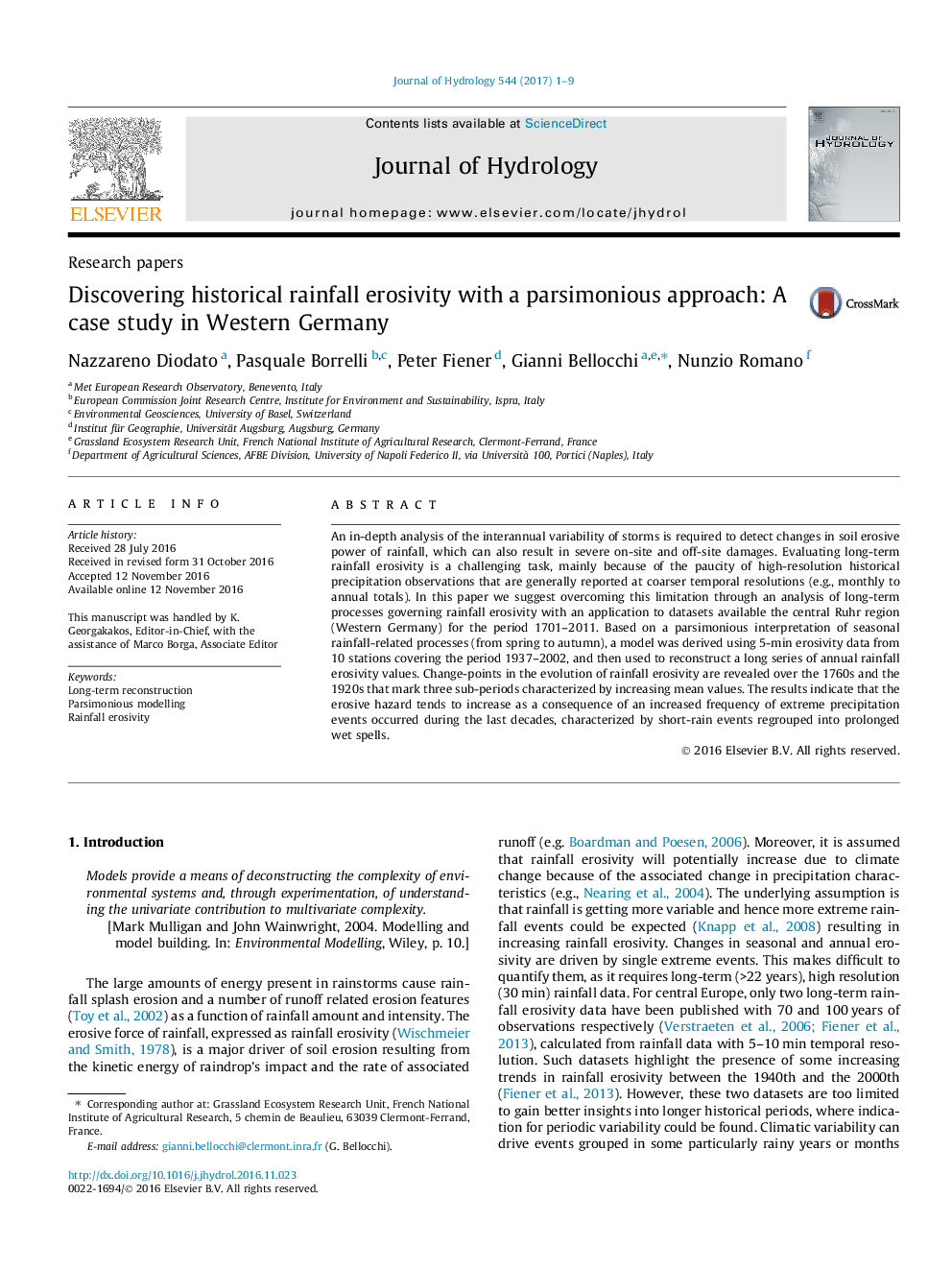| Article ID | Journal | Published Year | Pages | File Type |
|---|---|---|---|---|
| 5771321 | Journal of Hydrology | 2017 | 9 Pages |
â¢We develop a parsimonious model of rainfall-related processes for the Ruhr region.â¢The model provides a method to reconstruct and interpret long-term erosivity.â¢We identify an increasing trend of the erosive hazard in the study area.
An in-depth analysis of the interannual variability of storms is required to detect changes in soil erosive power of rainfall, which can also result in severe on-site and off-site damages. Evaluating long-term rainfall erosivity is a challenging task, mainly because of the paucity of high-resolution historical precipitation observations that are generally reported at coarser temporal resolutions (e.g., monthly to annual totals). In this paper we suggest overcoming this limitation through an analysis of long-term processes governing rainfall erosivity with an application to datasets available the central Ruhr region (Western Germany) for the period 1701-2011. Based on a parsimonious interpretation of seasonal rainfall-related processes (from spring to autumn), a model was derived using 5-min erosivity data from 10 stations covering the period 1937-2002, and then used to reconstruct a long series of annual rainfall erosivity values. Change-points in the evolution of rainfall erosivity are revealed over the 1760s and the 1920s that mark three sub-periods characterized by increasing mean values. The results indicate that the erosive hazard tends to increase as a consequence of an increased frequency of extreme precipitation events occurred during the last decades, characterized by short-rain events regrouped into prolonged wet spells.
